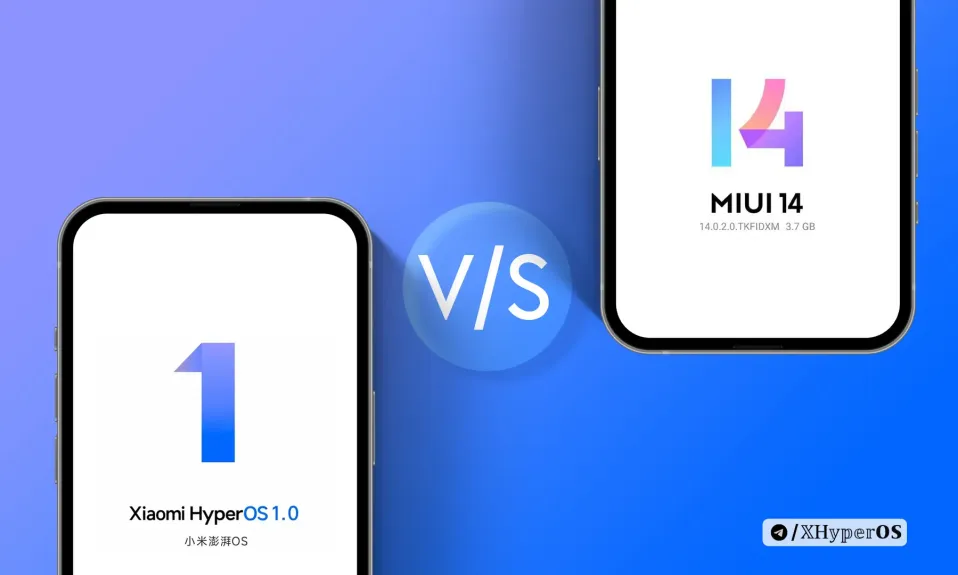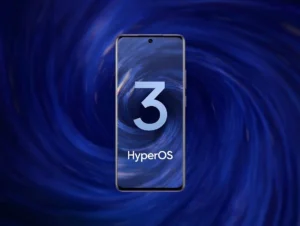HyperOS vs MIUI: Exploring 10 Key Differences
A New Era in Customization
HyperOS, the latest customization layer from Xiaomi, has piqued the interest of tech enthusiasts worldwide. It not only brings a fresh look but also promises enhanced stability and optimization, leading to smoother performance. While both HyperOS and MIUI are based on Android, HyperOS stands out with its ground-up development approach, leveraging Xiaomi’s years of experience to offer a refined, error-free user experience.

Unveiling the Differences
HyperOS and MIUI, despite their shared Android foundation, differ significantly both aesthetically and internally. Let’s delve into 10 intriguing disparities between the two:
- Efficiency and Storage Optimization: HyperOS consumes less memory and enhances battery life, occupying a smaller footprint compared to MIUI. With a meticulous development process, Xiaomi has ensured HyperOS not only optimizes resources but also prioritizes battery longevity through innovative algorithms.
- Bloatware Elimination: Unlike MIUI, which often came pre-loaded with numerous apps, HyperOS bids farewell to bloatware, focusing on minimalist design and essential functionalities.
- Holistic Ecosystem Integration: HyperOS extends beyond mere customization, aiming to unify the entire Xiaomi ecosystem across smartphones, smartwatches, speakers, TVs, and more, fostering seamless connectivity akin to Apple’s ecosystem.
- Minimalism and Intuitiveness: HyperOS boasts a revamped interface characterized by minimalism and intuitive design, featuring simplified yet representative icons and softer color palettes throughout.
- Streamlined Control Center: The Control Center in HyperOS adopts a cleaner layout, making it easier to access and manage various settings and functions compared to MIUI.
- Enhanced Lock Screen Customization: HyperOS offers a highly customizable lock screen experience with three distinct modes—Classic, Rhombus, and Magazine—each catering to different user preferences and aesthetics.
- Dynamic Information Display: Similar to iOS’s Dynamic Island, HyperOS introduces a dynamic status bar that adapts to display relevant information based on usage context, providing insights on battery status and charging.
- Revamped Camera App: The Camera app in HyperOS receives a makeover with a minimalist and intuitive interface, along with new features accessible via simple gestures, aiming to rival third-party camera apps.
- Android Feature Integration: HyperOS integrates Android features more prominently, such as app grouping by color for enhanced visual harmony and quicker access.
- Enhanced Productivity and Multitasking: HyperOS enhances multitasking capabilities with advanced features like independent app screens, facilitating simultaneous usage. Additionally, the HyperOS Pad variant offers a productivity-focused experience tailored for Xiaomi tablets.
Conclusion
HyperOS marks a significant leap forward for Xiaomi, offering a refined and cohesive user experience across its diverse product lineup. With its focus on efficiency, minimalism, and integration, HyperOS sets a new standard for Android customization.
HyperOS vs MIUI
Explore the intriguing differences between HyperOS and MIUI, Xiaomi’s latest customization layers, uncovering a new era in Android user experience.
Tags: Xiaomi, MIUI, HyperOS, Android, customization, smartphone, technology, user experience, integration, efficiency








1 thought on “HyperOS vs MIUI: Exploring 10 Key Differences”